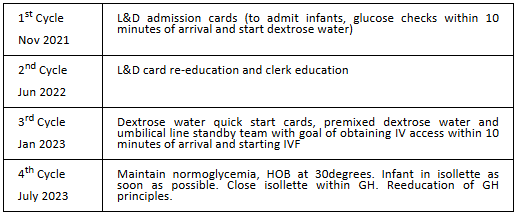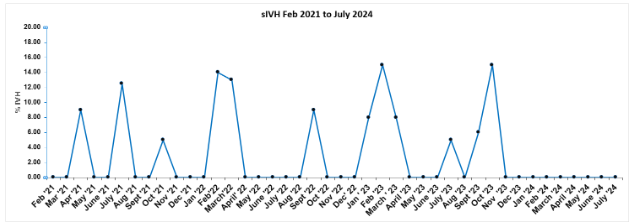Neonatal Quality Improvement 3
Session: Neonatal Quality Improvement 3
085 - Golden Hour in a Level 3 Neonatal Intensive Care Unit
Friday, April 25, 2025
5:30pm - 7:45pm HST
Publication Number: 85.5556
Bhuvaneshwari Jagadesan, University of Tennessee Health Science Center College of Medicine, Memphis, TN, United States; Heather Burgess, Regional One Health, Bartlett, TN, United States; Ajay J. Talati, University of Tennessee Health Science Center, Memphis, TN, United States

Bhuvaneshwari Jagadesan, MBBS (she/her/hers)
Assistant Professor
University of Tennessee Health Science Center College of Medicine
UTHSC
Memphis, Tennessee, United States
Presenting Author(s)
Background: Golden hour is the first 60 minutes of post-natal life of a neonate. Care provided during this period has lasting effects on the short term and long-term outcome. In our level 3 NICU, with a busy labor and delivery unit (L&D) in separate levels, there was a delay in admission of infants to the electronic medical record system (EMR). Admission in the EMR was essential to place orders for the infant. Any delays in admission led to further delays in care. The quality improvement project was initiated to better utilize the golden hour after birth of neonates especially infants ≤ 29 weeks’ gestation (GA) or birth weight ≤ 1250 grams (Bwt).
Objective: Our smart aims to achieve by December 2024 were: 1, Decrease admission time by 10 %. 2, Decrease time to start IV by 10% and to start IVF by 60 minutes of life. 3, Decrease severe intraventricular hemorrhage (sIVH) by 25%
Design/Methods: With the above goal, the golden hour team conducted group meetings and formulated our 1st PDSA cycle in which we implemented the L&D admission cards which include details required to admit infants (Name, Sex, Birth weight and time, GA), admission glucose checks within 10 minutes of arrival and start Dextrose water while waiting for parenteral nutrition. Our 2nd PDSA cycle included L&D card re-education and clerk education. We noticed delays in starting IVF (intravenous fluids) during our initial cycle, to minimize the time required to start IVF. Which led to the 3rd PDSA cycle, we Implemented the dextrose water quick start cards, premixed dextrose water, a standby team to start umbilical lines (in case of delays in obtaining PIV). In the 4th PDSA cycle, July 2023 we implemented the IVH bundle
Results: After the 2nd & 3rd PDSA cycle we were able to decrease the median birth to admission times by 14% (27 to 23 minutes). The median time to start IV decreased by 16 % (53 to 44 minutes) and the median time to start IVF decreased by 24% (89 to 67 minutes) however stayed more than 60 minutes. After the 4th PDSA cycle we were able to decrease our severe IVH to 0% from Dec 2023 to July 2024
Conclusion(s): We faced significant challenges in decreasing our admission time but were consistently able to maintain admission time within 30 minutes of birth. We show significant improvement in decreasing sIVH after the IVH bundle. We continue to show progress in decreasing the IV and IVF times.
PDSA Cycle Timeline

Run chart- Median birth to IV time and IVF time
.png)
Percentage of IVH Run Chart



